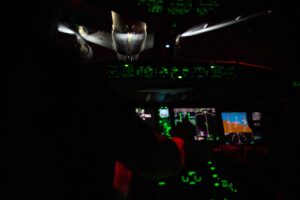
On May 5-6, a KC-46A Pegasus tanker assigned to the 22nd Air Refueling Wing at McConnell AFB, Kan., flew more than 24 hours straight--the longest mission in the history of Air Mobility Command (AMC), according to the U.S. Air Force. During the more than 9,000-mile journey, rotating pilots caught sleep every few hours, as the Boeing [BA]-built aircraft did dry refueling runs with another KC-46A, refueled four U.S. Marine Corps F-35Bs by Lockheed Martin [LMT] and was refueled by another…











